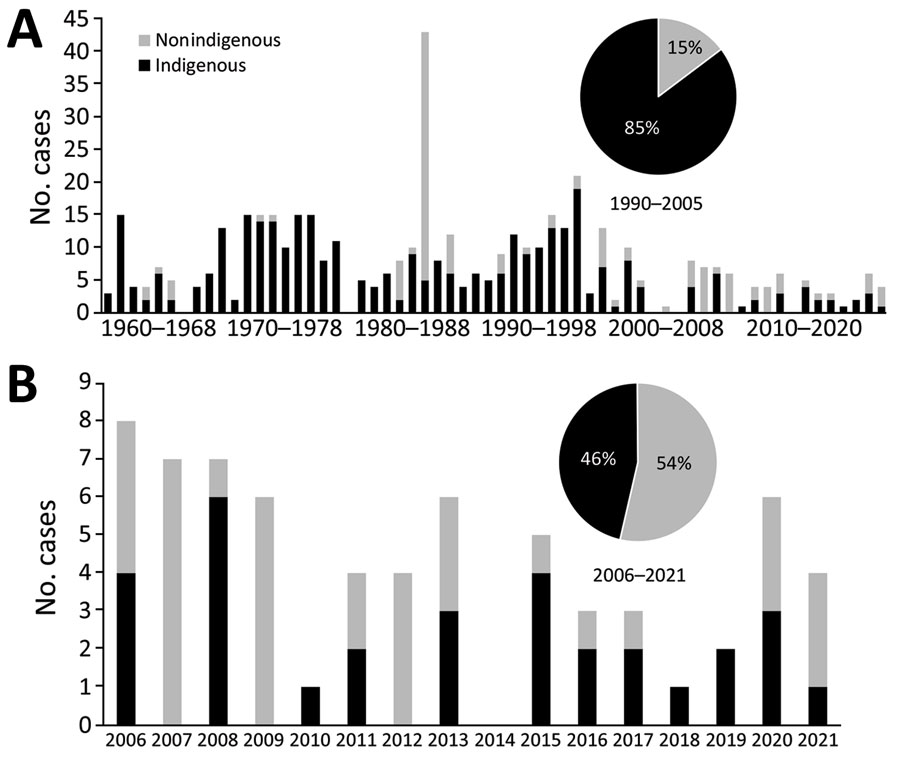Volume 29, Number 9—September 2023
CME ACTIVITY - Synopsis
Foodborne Botulism, Canada, 2006–20211
Figure 1

Figure 1. Number of foodborne botulism cases, Canada, 1960–2021. A) Number of cases during 1960–2021; B) detail of number of cases during 2006–2021. Inset pie graphs represent the percentage of cases among non-Indigenous and Indigenous persons.
1Results of this study were originally presented at the 58th Annual Interagency Botulism Research Coordinating Committee (IBRCC) Meeting, Richmond, California, USA, October 17–18, 2022.
Page created: July 05, 2023
Page updated: August 15, 2023
Page reviewed: August 15, 2023
The conclusions, findings, and opinions expressed by authors contributing to this journal do not necessarily reflect the official position of the U.S. Department of Health and Human Services, the Public Health Service, the Centers for Disease Control and Prevention, or the authors' affiliated institutions. Use of trade names is for identification only and does not imply endorsement by any of the groups named above.